Table of Contents
When you’ve got a piece of Japanese A5 Wagyu, it’s not just a meal, it’s an experience that you’re about to embark on. It’s an awesome piece of meat that if you’ve never had it before will make you rethink ever eating bargain meat.
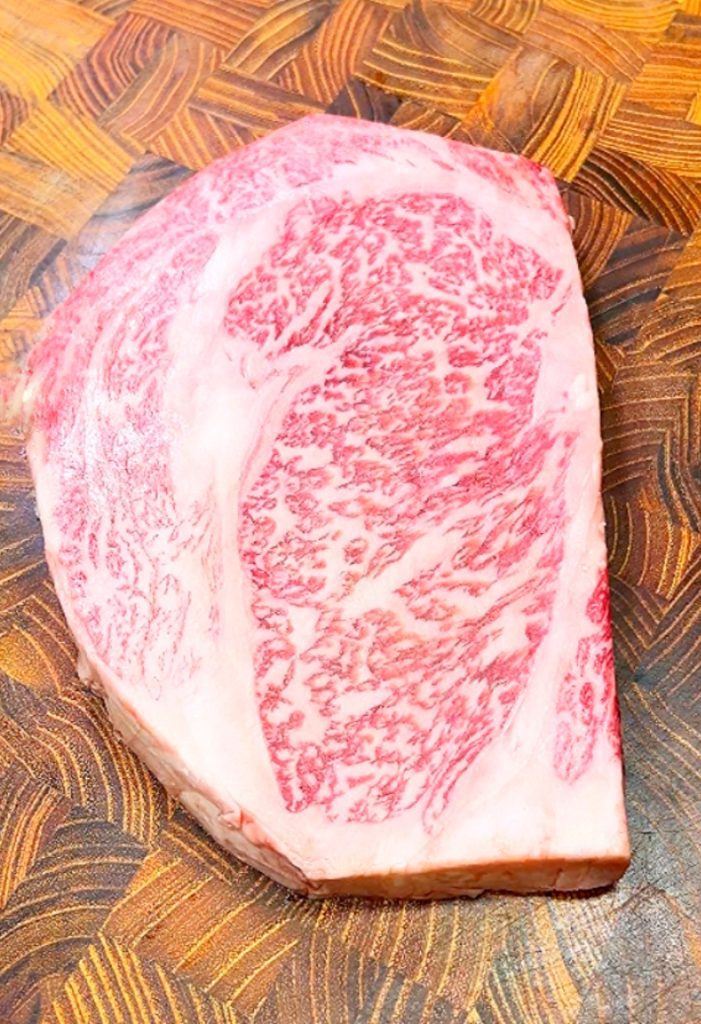
A5 Wagyu is known for having an unbelievably high quality and content of marbling that gives it an oily, buttery richness. When you cook A5 Wagyu it doesn’t cook like any other steak that you’ve had, so I want to make sure to go through in detail the do’s and don'ts of cooking this awesome steak!
Click Here to Print this Recipe and save for later
This is a really simple perfect steak to cook A5 Wagyu, you really just don’t want to overcook it, or add any bad flavors to it. With that said, when you cook A5 Wagyu Ribeye, you want to start by allowing the steak to both thaw completely and warm to room temperature before getting ready to cook.
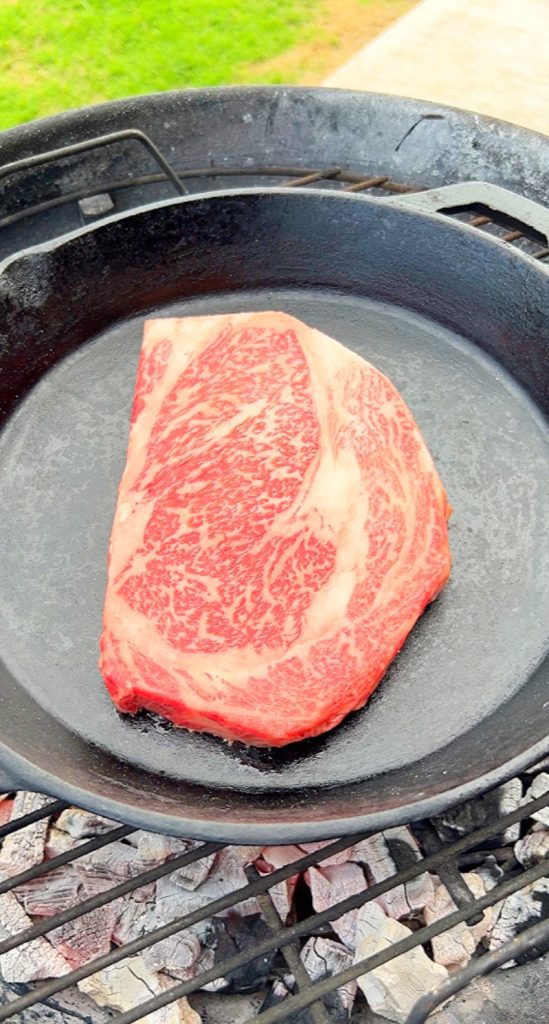
About 45 minutes before I'm ready to cook A5 Wagyu, I take it out to reach room temperature. This is crucial for ensuring it cooks evenly. Plus, a room temperature steak will cook A5 Wagyu faster and more evenly than one that’s still cold from the fridge.
Pat the steak dry with a paper towel to remove surface moisture. This helps achieve that perfect sear. A simple seasoning of kosher salt is all you need. For a thinner steak, use a light touch; for a thicker steak, don’t be shy. The salt amplifies the natural flavors without overpowering the luxurious beef. It’s always better to under-season initially, since you can add a little more later if needed.
The Art of Searing
The magic happens in the sear. To get that golden-brown crust, I swear by my cast-iron skillet to cook A5 Wagyu. Heat it over medium-high heat until it’s blisteringly hot. I like to do this on a hot grill outside. You can certainly do it indoors, however any grease spatter is easier to deal with outdoors. All part of the cooking process. Add a very, very small drizzle of neutral oil—just enough to coat the surface—and wait until it starts shimmering. When the skillet is smoking just slightly, you know it’s ready for the steak.
To finally cook A5 Wagyu, gently lay the steak in the skillet. You’ll hear a satisfying sizzle, a sound that promises a mouthwatering crust. For thinner cuts, about 1 minute per side does the trick. Thicker steaks may need up to 3 minutes per side. When we cook A5 Wagyu, like other cuts it's all about the temperature, not the time.
Take care not to move the steak around in the pan when you cook a5 Wagyu. You really want to put it down and leave it there until it’s ready to flip. This is allowing the Maillard reaction to do it’s wizardry and create the crust on the steak and that slight crisp on the outside of the A5 Wagyu that takes this to the next level.
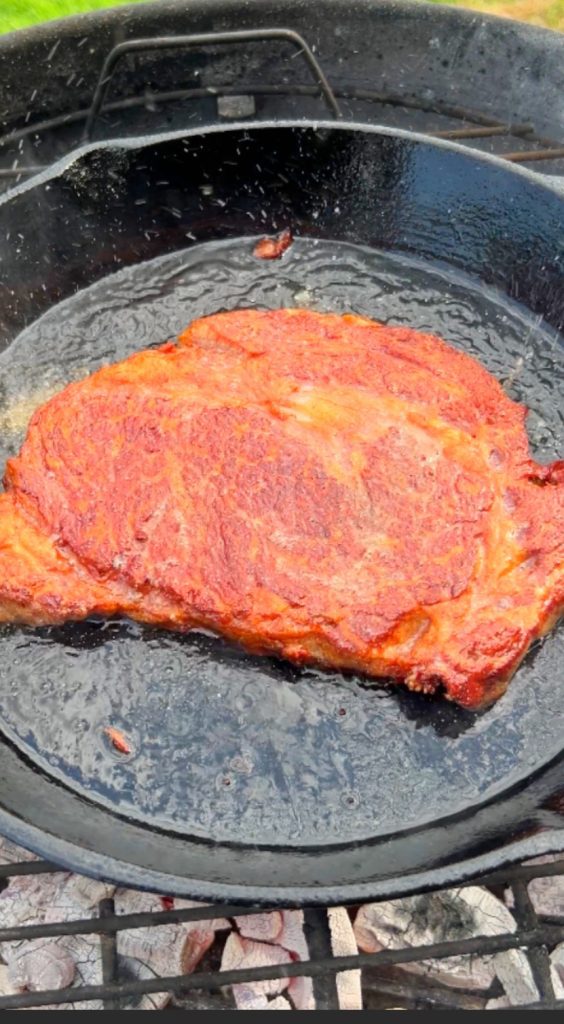
If you’d like to add some additional flavor to the steak, I’d recommend tossing in some crushed garlic cloves to fry in the grease from the steak, this will add a slight aroma and taste to the steak. This is certainly not needed to cook A5 Wagyu, it's more personal preference.
Gauging Doneness:
When you cook A5 Wagyu nailing the doneness is the best way to create something awesome. Something important to know when you cook A5 Wagyu, is that it doesn’t cook like other types of beef, so you want to take care that you’re not going to overshoot the temperature. Using an instant-read thermometer, I like to cook mine to a perfect medium-rare finish. This will mean removing the steak at about 120-125F. This will bring you to a perfect medium-rare after about 10 minutes of resting. That's my perfect way to cook A5 Wagyu!
Click Here to Print this Recipe and save for later
Carryover cooking will continue to occur so the steak will keep cooking after it’s out of the pan. Never cook A5 Wagyu until the temperature it's supposed to be done at! This will overcook it because of carryover cooking. The meat should be warm and pink in the center, and the fat should begin to melt and infuse the steak with its signature buttery flavor.
Letting It Rest
After the steak comes out of the skillet, let it rest for about 5–10 minutes.
This is arguably one of the most important parts of cooking this steak in that it allows the juices in the steak to redistribute back deep into the meat and not spill out all over your cutting board when you slice into it. If this happens, your steak will dry out, and you can consider this perfectly amazing steak to be ruined. Remember to rest to get it to your desired doneness!
As it rests, I like to cover it loosely with foil to keep the steak warm. This also allows the meat to come to its final desired doneness, so don’t be alarmed if it’s a little pinker when it’s cut.
Ok - so you’ve patiently waited for this steak to thaw and come to temp. Seasoned it perfectly and got your skillet to the perfect temperature, cooked the steak and have rested it. You’re really doing well! Now it’s time to dig in.
Before we do that, make sure to slice the steak against the grain. This will enhance the steak in that you’ll get the perfect buttery, melt in your mouth texture and flavor that you’ll want over and over again.
Slice thin steaks into smaller strips, this will help their texture when you eat. Slice thicker steaks in thicker strips. Each person will want a few strips of steak and pairs perfectly with a roasted vegetable and a starch like potatoes or rice.
It’s generally not necessary but if you do overcook your steak, and it’s seeming a little dry, you can drizzle some melted butter on top, or use to dip. Some fresh herbs work perfectly in the butter also!
Why Japanese A5 Wagyu Is Worth the Hype
Japanese A5 Wagyu is really something special the first time you have it!. The high fat content gives it a unique melt-in-your-mouth quality that sets it apart from any other steak. It’s not just food; it’s an experience. The marbling in Japanese beef is a thing of beauty, and it’s what makes this cut so coveted.
The wagyu fat renders down quickly when cooking and infuses the meat with a delicious oily, buttery taste and texture that's super-rich and delicious!
The Japanese cattle that produce A5 Wagyu are treated with the utmost care, and the end result speaks for itself. These cattle are raised in specific regions of Japan, fed a carefully controlled diet to ensure the fat marbling that makes the meat so special. While Kobe beef is one of the most famous types of wagyu beef, there are other equally impressive cuts to consider. Regardless of the origin, the flavor of true Japanese Wagyu is in a league of its own.
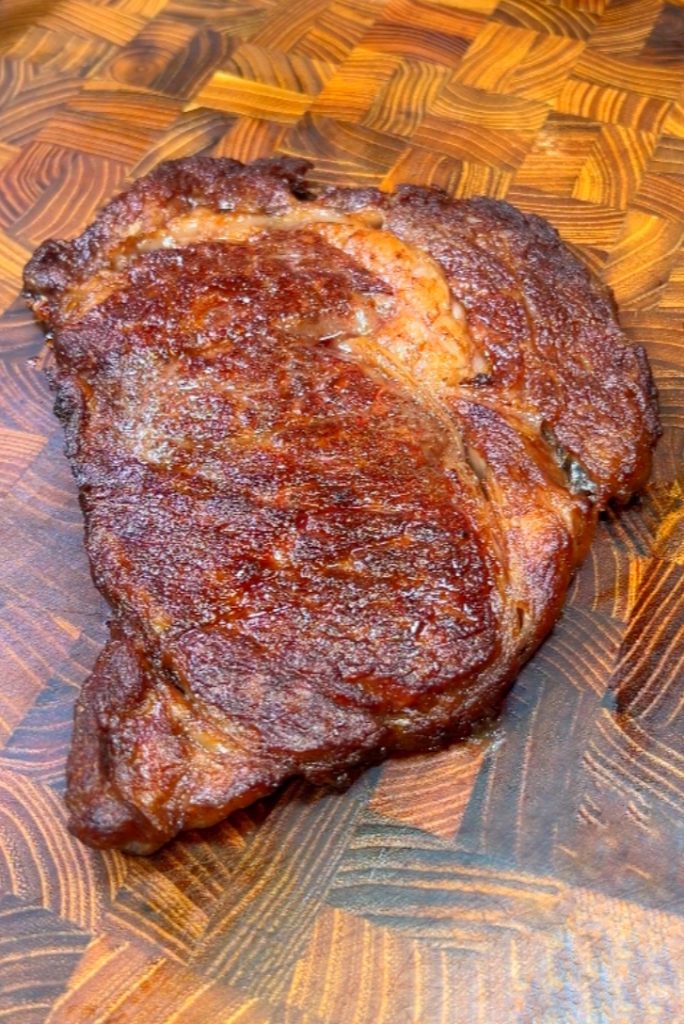
Pro Tips To Cook A5 Wagyu
- Start with a Cold Pan: If you’re nervous about overcooking, you can start with a cold skillet for better control. However, keep in mind that this method may take a little longer.
- Use the Right Tools: A cast iron pan and a reliable meat thermometer are non-negotiable. A hot pan is essential for achieving that perfect sear, so make sure the skillet is hot before adding the steak.
- When you cook A5 Wagyu: Keep It Simple: Resist the urge to over-season. Let the natural flavor of the beef shine. A simple seasoning of kosher salt is usually all you need. Don’t drown the steak in heavy sauces or too many spices—this steak deserves to stand on its own.
- Serve Small Portions: A little goes a long way with Wagyu due to its richness. This steak is an indulgence, and a small portion is all you need to enjoy the experience.
- Get Creative with Sides: While the steak is the star, adding a few complementary sides can make the meal feel more complete. A simple vegetable oil sautéed vegetable medley or a light salad with fresh herbs can balance the richness of the wagyu steak.
Click Here to Print this Recipe and save for later
Best Ways to Enjoy Wagyu Steak
While there are countless ways to enjoy wagyu cuts, I find that keeping things simple often yields the best results. Japanese-style dishes like a basic steak with just a light salt seasoning allow the natural flavors to shine. However, if you're feeling a bit adventurous, consider pairing it with garlic cloves or a few drops of extra-virgin olive oil.
Wagyu pairs wonderfully with a variety of wines, too. I love a good glass of red wine, such as a Cabernet Sauvignon or a Malbec, to complement the steak’s rich flavor. The full-bodied notes of these wines match the depth of the beef, making for a luxurious pairing.
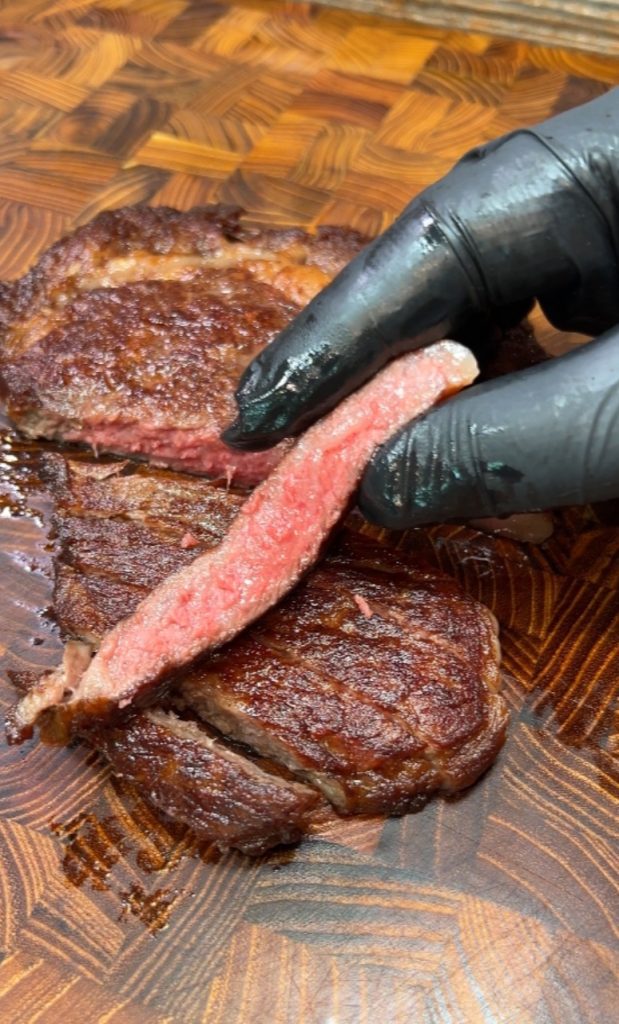
The Final Touch
As you take that first bite of perfectly cooked Japanese A5 Wagyu, you’ll understand why this is considered one of the best cuts of meat in the world. The fat melts beautifully, creating a buttery flavor profile that will have you coming back for more. Whether you’re celebrating a special occasion or simply treating yourself to a rare culinary experience, cooking A5 Wagyu is an event that should be savored.
Watch the video of this steak cooking on Instagram!
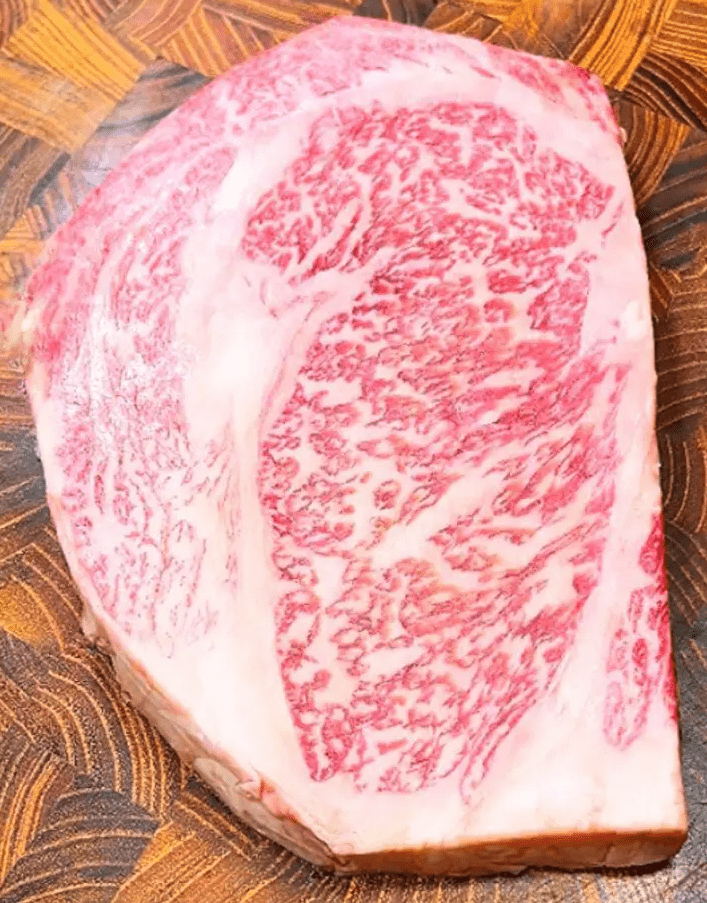
How to cook A5 Wagyu Ribeye
Ingredients
- 1 A5 Wagyu Ribeye
- Sea Salt
Instructions
- Make sure steak is fully thawed
- About 30-45 minutes before cooking, remove the steak from the fridge and let it come to room temperature.
- Lightly season both sides of the steak with sea salt.
- Heat a cast iron skillet on high heat until hot.
- Place the steak in the skillet, searing for 1-2 minutes on each side until a caramelized crust forms.
- Use a meat thermometer to check the internal temperature, aiming for 125-128°F for medium-rare.
- Transfer the steak to a cutting board and let it rest for 5-10 minutes this will allow the steak to increase in doneness to medium rare
- Slice the steak against the grain into thin strips.

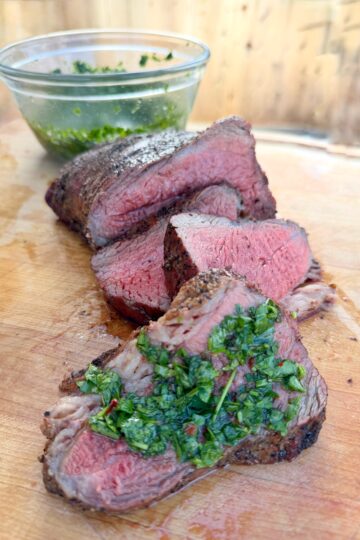
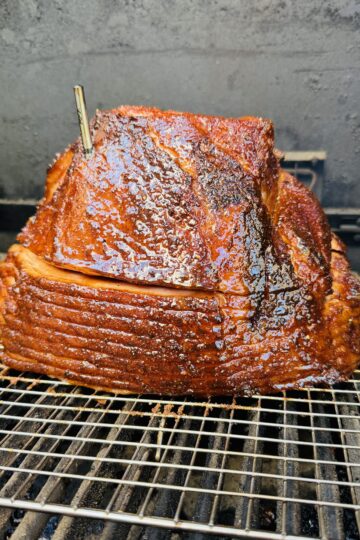
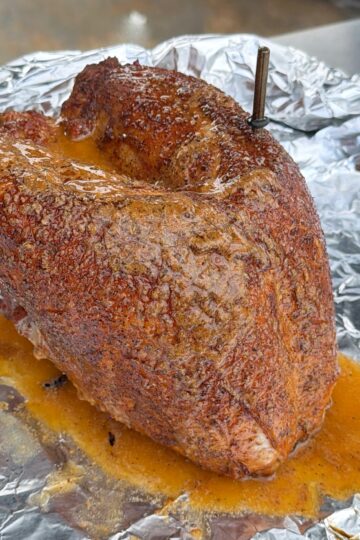
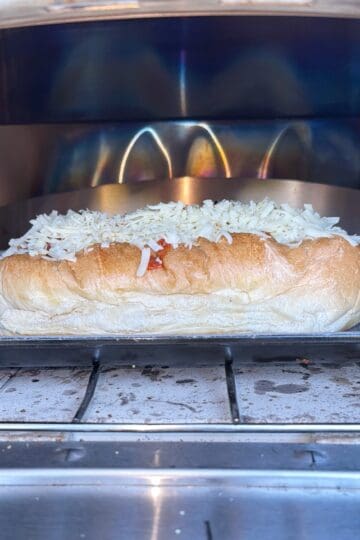
Leave a Reply